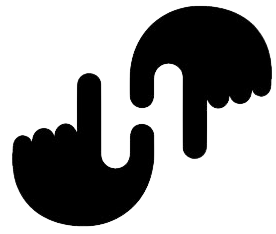What is bund lining?
A bund is a liquid containment facility that contains leaks and spillage from tanks and pipes. Frequently, the liquids in tanks and pipes are toxic, but bund lining is used to prevent the liquid from causing damage (either by force or its chemistry).
What is a bund wall made of?
Most typically, bund walls are made from concrete, both the wall itself and the floor. This is a situation where the poor drainage qualities of concrete are very useful. Assuming it has been constructed properly, the bunding should be completely impermeable, making it an excellent material.
How does a bund work?
Bunds are generally fabricated from brick/mortar or concrete but where liquids are being stored above their boiling point additional insulation, e.g. vermiculite mortar, may be added as cladding to reduce the evaporation rate. Such materials provide adequate chemical resistance to most liquids.
How do you make a bund?
The best material to build a bund flood barrier is soil with high clay content
- To construct a Bund to hold back flood water you will need a clay based soil that’s free of stone and gravel.
- Gaps caused by too much gravel or stone in the clay, can cause piping, letting water seep through the Bund.
What does bund mean in India?
an embankment
1 : an embankment used especially in India to control the flow of water. 2 : an embanked thoroughfare along a river or the sea especially in the Far East. bund.
What is the difference between bund wall and dyke wall?
Bund wall is a Bunding constructed alongside of storage tanks, where possibly polluting substances are stored and handled. Bund wall also referred as dike wall, but dyke is normally used to describe liquid containing tank facilities which prevent leaks and spillage from tanks and pipes.
How do you calculate a bunded area?
EXAMPLE
- Ultra-Bund® – 25mm profile bunding across doorway: 20m (L) x 12m (W) x .025m (H) = 6.0m3 x 1,000 = 6,000L of containment.
- Ultra-Bund® – 35mm profile bunding across doorway: 20m (L) x 12m (W) x .032m (H) = 7.68m3 x 1,000 = 7,680L of containment.
Do you need planning permission for a bund?
Create an earth bund or embankment Permission is normally required, unless it is part of an existing permission or approved landscaping scheme. If the project requires soils to be brought in, then this may also be a ‘deposit of waste’ and other regulations will also apply.
What is bund in one word?
1 : an embankment used especially in India to control the flow of water. 2 : an embanked thoroughfare along a river or the sea especially in the Far East. bund. noun (2), often capitalized.
Is Bhosdike a bad word?
‘ Let us tell you, ‘Bhosadike’ or also called ‘Bhosadi ke’ or ‘Bhosdike’ is an extremely degrading term and using it in public can only attract disgust, unless you are singing the popular song, of course, Bhaag DK Bose from Delhi Belly, that could be your cover up!
Why are Bund used as secondary containment vessel?
In many industries bunds are widely used to act as secondary containment vessels to protect against the consequences of the failure of a primary containment vessel (e.g. storage tank, drums, IBCs ).
What is the purpose of a concrete bund?
Concrete bund. Blockwork bund. In many industries bunds are widely used to act as secondary containment vessels to protect against the consequences of the failure of a primary containment vessel (e.g. storage tank, drums, IBCs).
What kind of material is used for bund walls?
Bund walls are normally constructed from brick or block, however where they need to contain large volumes of liquid they may also be constructed from reinforced concrete. Detailed information the construction of bunds ranging from 1000 to 25000 litres can be found in CIRIA Report R163 “Construction of bunds for oil storage tanks” [1]
How big of a bund do you need for an oil tank?
Detailed information the construction of bunds ranging from 1000 to 25000 litres can be found in CIRIA Report R163 “Construction of bunds for oil storage tanks” [1] The bund lining will need to be resistant and impermeable to the liquids being stored.
